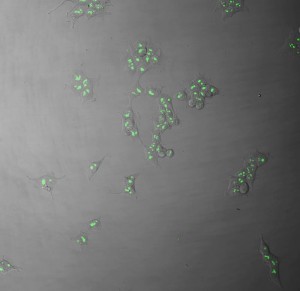PITCh: An Alternative Use of TALENs and CRISPR/Cas9

Researchers from Hiroshima University have presented a new gene insertion method called Precise Integration into Target Chromosome (PITCh). The method uses existent gene editing technologies more effectively. The study has been published in the journal Nature Protocols.
Recent genome editing techniques have allowed researchers an unprecedented capacity for DNA sequence modification at the desired target. Gene insertions and deletions can be carried out in complex eukaryotes thanks to tools like CRISPR/Cas9 or TALENs.
Clustered Regularly Interspaced Short Palindromic Repeats (CRISPR) is a bacterial immune system that recognizes foreign DNA and incorporates it at the CRISPR loci. These loci transcribe into crRNA, which binds Cas endonucleases and targets them to cleave alien, complementary DNA. crRNA can be engineered to match any desired locus, targeting Cas9 to nick that region.
Transcription activator-like effector nucleases (TALENs) are artificial restriction enzymes created by fusing a customizable DNA binding domain (due to the strong recognition of specific nucleotide sequences by certain residue repeats) with a DNA cleavage domain (from Fokl endonucleases).
These two technologies, however, present certain difficulties for gene insertion. First, they require extensive work to design the amino acid or RNA sequences that guide the endonucleases to the targeted DNA region. Second, both make use of the Homologous Recombination (HR) pathway, one of several ways to fix DNA strand breaks. But, in some cell types, HR is very low and/or difficult to induce.
Using microhomology-mediated end joining (MMEJ) for DNA targeting
The authors looked for an alternative to HR. In the G1/S phases of the cell cycle, another DNA repair mechanism takes place, called microhomology-mediated end joining (MMEJ). Based on the alternative repair mechanism, the researchers developed PITCh, a new strategy that using TALEN or CRISPR/Cas9 accomplishes the insertion of large DNA fragments even in cells or organisms with low HR frequency. MMEJ leverages different cellular machinery than HR, and needs a very short homology sequence (5-25 bp) to repair a DNA break. Due to these differences, the vector design for gene knock-in is much easier.
The researchers presented PITCh in a recent paper published in Nature Communications. Now, they present a detailed protocol for PITCh knock-in, from the design and construction of the vectors to their delivery to human cell lines or frog embryos. Construction of PITCh vectors takes a few days, and the establishment of a cell line takes around one month and a half. Early genotyping of frog embryos can be done in one week.
Source: Hiroshima University

